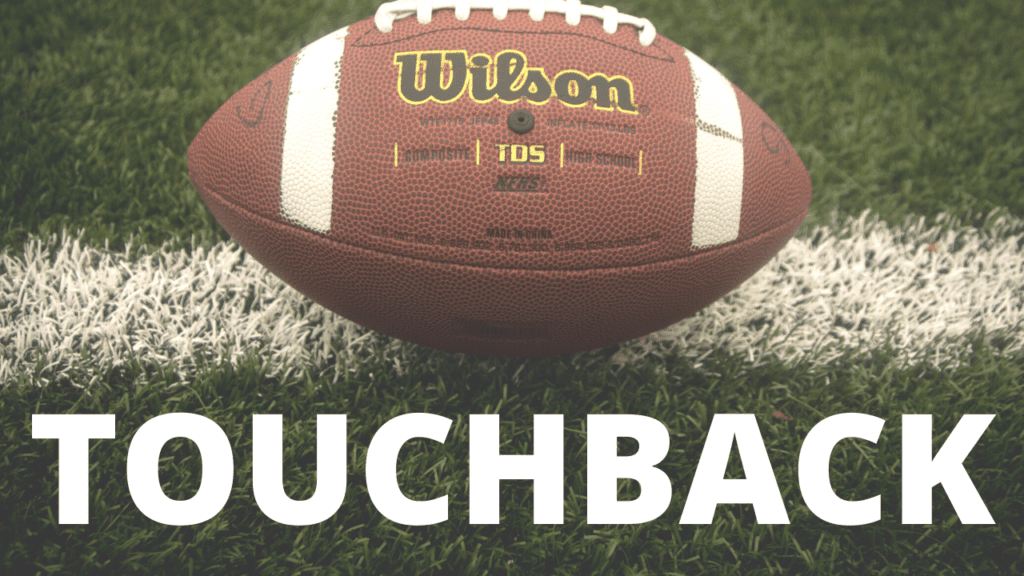In the world of American football, rules and terminologies can often be confusing for newcomers and seasoned fans alike. One such term that frequently comes up during games is "touchback." Understanding what a touchback is and its implications can enhance your appreciation of the game and its strategies. A touchback occurs under specific conditions that transition the ball from the field of play to the start of a new offensive series for the team receiving the ball. This seemingly simple concept carries several nuances that affect game dynamics, scoring, and team strategies.
Typically, a touchback happens when the ball is kicked into the end zone and remains there without being returned, or when a player kneels down in the end zone after receiving a kick. The rules surrounding touchbacks are designed to promote player safety and maintain balance in the game. Thus, having a clear understanding of what a touchback is can not only help you follow the game better but also engage in discussions about strategies and plays more effectively.
As you delve deeper into the concept of touchbacks, you will discover their significance in various situations, including kickoffs and interceptions. The strategic implications of a touchback can greatly influence the flow of a game, affecting both team morale and gameplay decisions. In this article, we will explore what a touchback is, the rules governing it, its significance in the game, and how it can impact the outcome of a match.
What is a Touchback in Football?
A touchback is a situation in American football that occurs when the ball is kicked into the end zone and is not returned. When a touchback is called, the receiving team is awarded possession of the ball at their own 20-yard line (or the 25-yard line after a touchback on a kickoff, depending on the league). This rule is in place to encourage teams to opt for a safe play instead of risking a return that could result in injury or a turnover.
How Does a Touchback Occur?
Touchbacks can occur in several scenarios, primarily during kickoffs and punts. Here are a few common situations:
- When the ball is kicked into the end zone and not returned by the receiving team.
- When a player catches the ball in the end zone and chooses to kneel down instead of attempting a return.
- During a field goal attempt that goes through the end zone without being touched.
Why is a Touchback Important?
Touchbacks play a crucial role in football strategy. By awarding the offense possession at the 20 or 25-yard line, teams can avoid dangerous returns that may result in turnovers or injuries. Additionally, touchbacks can influence field position, which is critical in determining the outcome of games. With better field position, teams can strategize their plays more effectively.
What Are the Rules Governing Touchbacks?
Touchbacks are governed by specific rules set forth by various football leagues, including the NFL and NCAA. The primary rules include:
- The ball must be kicked into the end zone for a touchback to occur.
- If the ball is caught in the end zone and the player kneels down, it is ruled a touchback.
- After a touchback, the offense starts their possession at the designated yard line.
How Do Touchbacks Affect Game Strategy?
Coaches and players consider touchbacks when formulating their game strategies. For instance, teams may choose to kick the ball deep into the end zone to force a touchback rather than risk a return. This tactic can preserve player safety and maintain advantageous field position. Additionally, offenses can capitalize on starting from the 25-yard line, giving them a better chance to score.
What Are the Variations of Touchbacks in Different Leagues?
While the essence of a touchback remains the same across different leagues, there are variations in specifics:
- In the NFL, the ball is placed at the 25-yard line after a kickoff touchback.
- In college football, the ball is also placed at the 25-yard line following a kickoff touchback.
- In high school football, touchbacks are typically placed at the 20-yard line.
What Happens After a Touchback?
Once a touchback is called, the game resumes with the receiving team taking possession. The offense huddles up, prepares for the plays, and attempts to advance the ball down the field to score. The significance of touchbacks extends beyond just possession; it sets the tone for the upcoming offensive series, allowing teams to reset and strategize effectively.
What Are the Consequences of Not Understanding Touchbacks?
For fans and players alike, a lack of understanding regarding touchbacks can lead to confusion during games. Misinterpretations can affect discussions, strategies, and even the appreciation of the game's intricacies. By grasping what a touchback is and its implications, fans can engage more meaningfully with the sport, enhancing their overall experience.
Conclusion: Why Knowing About Touchbacks Matters?
Understanding what a touchback is can significantly enrich your viewing experience of American football. It’s not merely a rule; it’s an integral part of the game that influences strategy, player safety, and the overall flow of the match. By familiarizing yourself with touchbacks, you not only become a more informed fan but also contribute to the lively discussions that accompany this beloved sport.
Meagan Good's New Movie: A Captivating Journey
Unveiling The Wonders Of Epic The Musical
Diving Into Sweetness: Your Guide To Desserts Near Me Open Now


